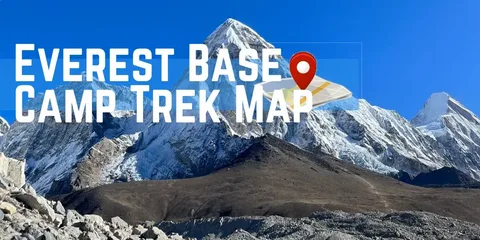You don’t even have to be one of those people for whom a trip to Everest Base Camp is an It dream — and for a lot of people, one big tough one at that. At 17,598 feet (5,364 meters), this high-altitude trek in the Khumbu region of Nepal is not for the weak-hearted, or for that matter, the body and the mind. But here’s the great part: How fit you are on the trail is typically much less about how strong you are the week before your treks (though it probably does still matter a little), and much more about how hard you front-load your training in the months leading up to them.
The more of that stuff you have out of the way and the more specific your pre-wardrobe prep is, the better a chance whatever follows will be in your favor. When your prep is right, it’s the difference between hobbling over the finish line and dancing your way through the day on this magical, life-changing adventure!
Here’s what it might look like for you in more detail… How you can prepare for an EBC Trekking (by training a little differently in ways which may sow the seeds of success further into the future) 1.
Why Front-Loading Training Matters
When you front-load your training, you’re not just pushing off workouts until the last-this-side-of-impossible moment. Instead, you build a fitness base and evolve your approach to training as a runner. And it’s more than the secret to increasing your endurance and making strength gains; it’s what prevents you from becoming injured and burned out.
Mount Everest Base Camp Tour is a marathon, not a sprint. It’s 12–14 days of nothing but high-altitude bushwhacking. If you are rolling into Kathmandu with a body that has been trained and toughened up before you arrive, you’re going to start with confidence, and that will take you through the tough days on the trail.
Start Early: The 12-Week Rule.
You would ideally start training 12 to 16 weeks before the day you hope to hit the trail. Your body will be able to adjust (and you won’t be too much for it)! The more that you can get into line ahead of time, the better time you’re going to have on the trail.
Start slowly and build progressively. The first couple of weeks, you are only making yourself cardiovascularly fit and getting into a habit. Total 50-75 Miles. Do a few hikes over the last couple of weeks on trails that are more typical of what you will encounter on your trip.
Build a Strong Aerobic Base
It could be that your own heart and lungs are your very best friends at high altitude. Good cardio is what is going to keep you from totally running out of gas out there when you are trying to put in long days of hiking. As far as the cardio goes, mostly just light to moderate stuff fairly often, especially in the first half of your training plan.
Limit the steady cardio to three or four times a week, slow-and-steady, ultra-dull sessions (45-60 minutes at a clip) for an astonishing duration. And this is base conditioning that is trek endurance, and one you have to build as early as week 1.
Train Like You Trek
Once your work is done on that good cardiovascular base, you’ll want to start working on getting specific for trekking. Long hikes, uphill work, and strength training are the best ways to ready your body for the experience it will encounter on the trail. ~Bathe your body, surprisingly!
Weekend hikes are especially valuable. Pick local trails with some elevation gain and wear the boots and pack you plan on wearing in Nepal. Slowly increase the length of these hikes so that they’re at least six hours in duration. Strap a rucksack onto your back that holds approximately 6-8kg of weight in preparation for the sound carry.
I mean, yes, you can do the treadmill thing indoors – but that’s not getting you (or your gear) accustomed to rocks and steps, snow and trails of dirt! The more of a joke you make the walk here, the less the return will hurt.
Practice Hike Recovery
In simpler terms, we’re so addicted to working out that we forget about the flip side of the coin: recovery! But it is also when your body gets accustomed to it and gets stronger.
On a trek to Everest, on the other hand, there’s a minimum of four to six hours of walking every day, and you must wake up ready for the next day. Practice this in training. Stretch and hydrate, eat well, and rest after those long hikes. The next morning, engage in active recovery — foam rolling, light yoga, and a walk around the block.
By the time you find Nepal a few days in, you’ll be getting into the swing of life behind the bouncebank.
And not just your body, but your brain as well
The hike to Everest Base Camp is not about the body; it’s the mind. You will have days that gain degrees of incline while you have already left their elevation behind, days that run up hundreds of feet, air that drops and freezes from your toes to your nose. Because you know, one of those days is coming. You can certainly do this instead, but be of a good cheer and make light of it, if you please.
Training early builds mental resilience. There will be hell to pay in that process, or as Homer wrote in “The Iliad,” so that o more can try out our ways of suffering shit from both. Turn savagely hard training days into grit practice days. Whatever the reasons, they are your reasons. Visualize the mountains. I t’s tough, but you have to tell yourself: The path is tough, but I am tougher.
As Far as Possible, Copy
Broken in one as close to your reservationist as you will find in Nepal. Hike in cold weather. Get used to early starts. Wear the boots, the socks, a nd the pack you intend to have on the hike. The little things — how your pack lies on your shoulders after four hours — are the big things out there.
Training during your high-altitude hikes (when and if possible) helps a ton. If you can handle more, focus on low-intensityuts workouts and recovery, and rest.
Final Thoughts
Training for Everest Base Camp is more than just physical strength – it’s mental preparation and commitment. You can build up that endurance as you train for race day, you can keep yourself free from injury, a nd you can learn patience and the mental strength to endure the hardest days on the trail.
“The uglier on the front, the prettier on the back. You will then either descend upon the Himalayas in flesh, porter in strength of brai,n fai,th of cou,rse, and course supremest.
The real victory is lly the tall, cold, craggy 29,031-foot summit of Mount Everest, after all; it’s the summit accomplished while sitting comfortably at home on the couch, long before you so much as approach what we informally call the mountain.






